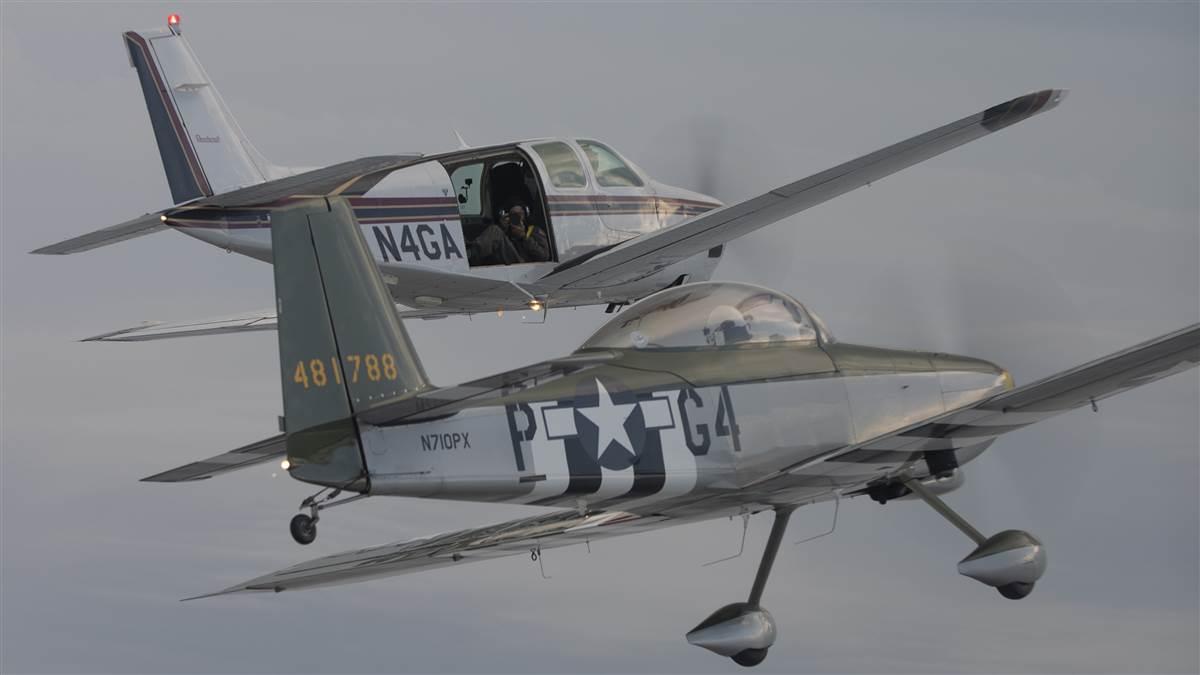After the checkride: Sticking together
Hone your precision skills in formation flying

It’s a terrible photo and not just because I don’t like myself in photographs. No, the fear on my face is starkly obvious; I had never been so close to another aircraft in flight and, quite frankly, I never have been again. But if you are a pilot who delights in precision, strict adherence to rules, and the challenge of using your skills to the utmost, consider formation flying.
Like birds and military aircraft, flying in tandem with another is a beautiful thing to see (in my case, from the ground). Scientists believe birds fly in a V-formation during migration to simply make the flying easier. At certain positions in the formation, there is less drag and a bird has to work less; the movement within the formation gives the migrating birds relief on their long flight. Military formation concentrates firepower and provides defense for the group of aircraft on a mission. At airshows, watching the skill and precision of formation flying such as the U.S. Air Force Thunderbirds and the U.S. Navy Blue Angels is awe-inspiring.
My reason for flying in formation was a photo shoot. The incredible photography you see in AOPA publications and online (yeah, and other aviation magazines) is a highly orchestrated choreographed flight of a subject aircraft and the photo platforms. The aircraft often are as close as 10 feet (although typical distance is usually 20 to 30 feet).
Photo and subject pilots must be well versed and proficient at formation flying. The practice is regulated by FAR 91.111. Formation skills are fundamental for generations of military pilots, and civilian pilots can gain many of the basic concepts and skills through type clubs and formation training organizations such as Formation and Safety Team (FAST) and Formation Flying Inc. (FFI).
Formation flying has its own language. The pilot in command is “lead”; “station-keeping” is following the lead’s moves; “cross-unders” are movements on either side of the lead; “pitch-outs” are breakaways; “rejoin” is coming back into formation; “in-trail” is following the lead.



